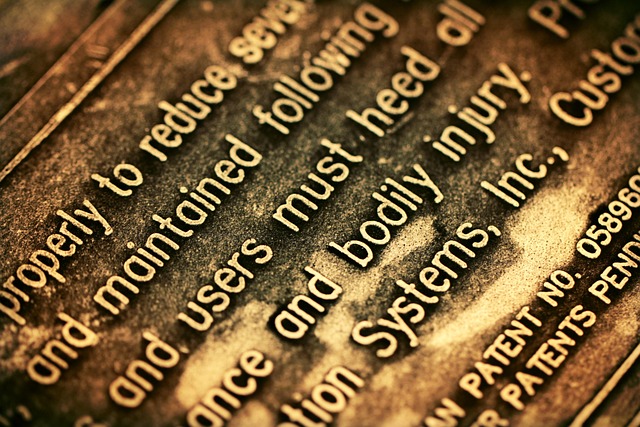Laser-cutting sheet metal detailing has transformed manufacturing by offering unparalleled precision, efficiency, and material optimization. Engineers in this field must carefully consider material properties and part geometry to ensure structural integrity using advanced simulations and stress testing. Simulation software allows for virtual validation of intricate laser-cut designs, predicting potential failures before physical prototypes are created. This process saves time, resources, and reduces waste, ensuring superior product quality and enhancing the safety of complex sheet metal structures.
In the realm of manufacturing, precise sheet metal design is paramount. This article explores the critical process of validating these designs using stress and load simulations, especially in the context of laser-cutting sheet metal detailing. We delve into the challenges unique to sheet metal, highlighting the importance of advanced simulation techniques for ensuring structural integrity and accuracy. By understanding the role of simulations, you’ll discover how they optimize the design phase, from conceptualization to production, ultimately driving innovation in laser-cutting applications.
Understanding Sheet Metal Design and Its Challenges
Sheet metal design is a complex process that involves creating precise and intricate shapes from flat sheets of metal, often requiring advanced techniques like laser-cutting for detailed sheet metal detailing. This field presents unique challenges due to the material’s inherent properties—it can be easily deformed and has variable thickness, making it sensitive to load distribution. Engineers must consider factors such as material yield strength, strain, and deflection to ensure structural integrity under various stresses.
One of the primary goals in sheet metal design is to optimize the material layout while maintaining functionality. Designers navigate the challenge of minimizing waste by carefully planning part geometry and considering manufacturing processes like laser-cutting, which demands precision programming to avoid errors that could lead to scrap material. Effective validation through stress and load simulations is vital to predict and prevent such issues, ensuring the final product meets performance expectations.
The Role of Stress and Load Simulations in Validation
In the realm of sheet metal design, stress and load simulations play a pivotal role in validation processes, especially when intricate details like laser-cutting sheet metal are involved. These simulations offer a sophisticated approach to ensuring structural integrity and performance across various applications. By modeling complex geometries and applying realistic loads, engineers can predict and identify potential failure points or areas of weakness before production begins.
Through advanced computational techniques, stress and load simulations replicate real-world conditions, enabling thorough evaluation of sheet metal components. This is particularly beneficial for intricate laser-cutting designs where material removal and resulting structural changes can significantly impact performance. Simulations provide valuable insights into the distribution of forces, enabling designers to optimize their creations, enhance efficiency, and ultimately achieve superior product quality.
Techniques for Laser-Cutting Sheet Metal Detailing
Laser-cutting sheet metal detailing has emerged as a game-changer in manufacturing, offering unprecedented precision and efficiency. This technique utilizes high-power lasers to cut through various materials, including thin sheets of metal, with remarkable accuracy. By programming complex designs into the laser system, intricate patterns and shapes can be precisely etched onto the metal surface.
The process involves generating detailed digital blueprints that are converted into instructions for the laser cutter. The laser moves over the sheet metal in a controlled manner, burning or vaporizing the material according to the design specifications. This method allows for the creation of complex geometries that would be challenging or time-consuming to achieve using traditional cutting techniques. Laser-cutting also ensures consistent quality and accuracy, minimizing waste and maximizing material utilization.
Ensuring Accuracy and Safety through Simulation Software
In the realm of sheet metal design, ensuring accuracy and safety is paramount, especially with intricate details like laser-cutting sheet metal. This is where simulation software plays a pivotal role. Advanced engineering tools enable designers to virtually test and validate their creations before physical prototypes are even crafted. By simulating various stress and load scenarios, engineers can predict potential failures or weaknesses in the design, allowing for crucial adjustments early in the development phase.
This digital approach not only saves time and resources but also enhances overall product quality. With simulation software, every aspect of a laser-cutting sheet metal detail can be meticulously analyzed, ensuring structural integrity and performance under real-world conditions. This meticulous validation process is a game-changer, fostering confidence in the design while reducing risks associated with physical testing alone.
In conclusion, validating sheet metal design through stress and load simulations, combined with advanced laser-cutting sheet metal detailing techniques, ensures superior product accuracy, safety, and quality. Simulation software plays a pivotal role in navigating the intricate challenges of sheet metal design, enabling professionals to make informed decisions before production. This approach not only enhances efficiency but also revolutionizes the way we think about manufacturing, fostering a future where precision and innovation go hand in hand.
